Sociology of Education: Essential Concepts for Reading Comprehension
The sociology of education examines how educational institutions shape and are shaped by social structures, inequalities, and cultural norms. This field explores the role of education in socialization, mobility, and the reproduction of societal values. RC passages on this topic often analyze educational practices and their implications for equity, identity, and economic opportunity. Understanding these concepts provides readers with insights into the relationship between education and society.
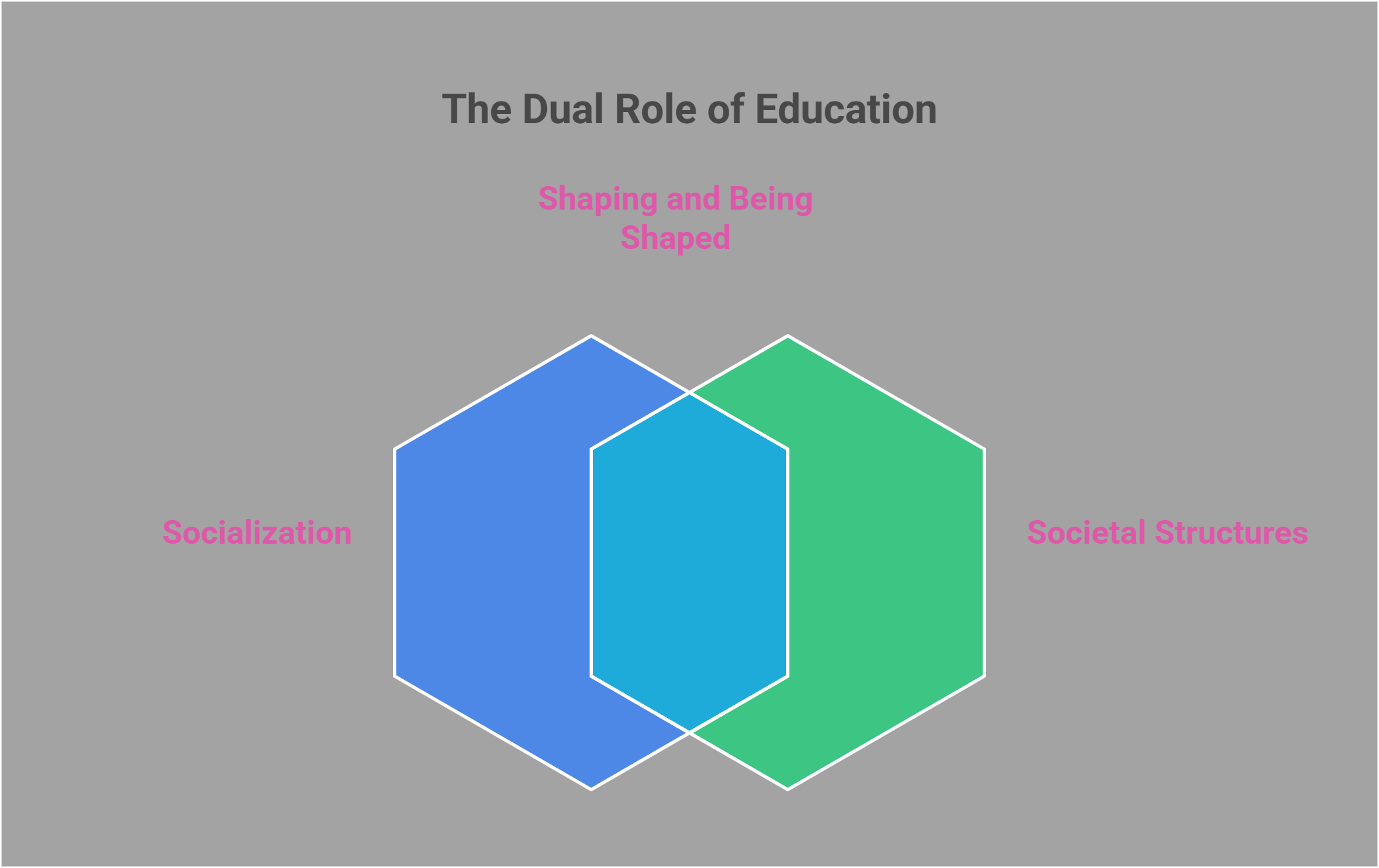
📋 Key Concepts
This guide explores the following essential concepts in the sociology of education:
- Hidden Curriculum
- Social Reproduction
- Tracking and Streaming
- Teacher Expectations
- Education and Social Mobility
- Digital Divide in Education
- Standardized Testing
- Bilingual Education
- Education and Gender
- Informal Education
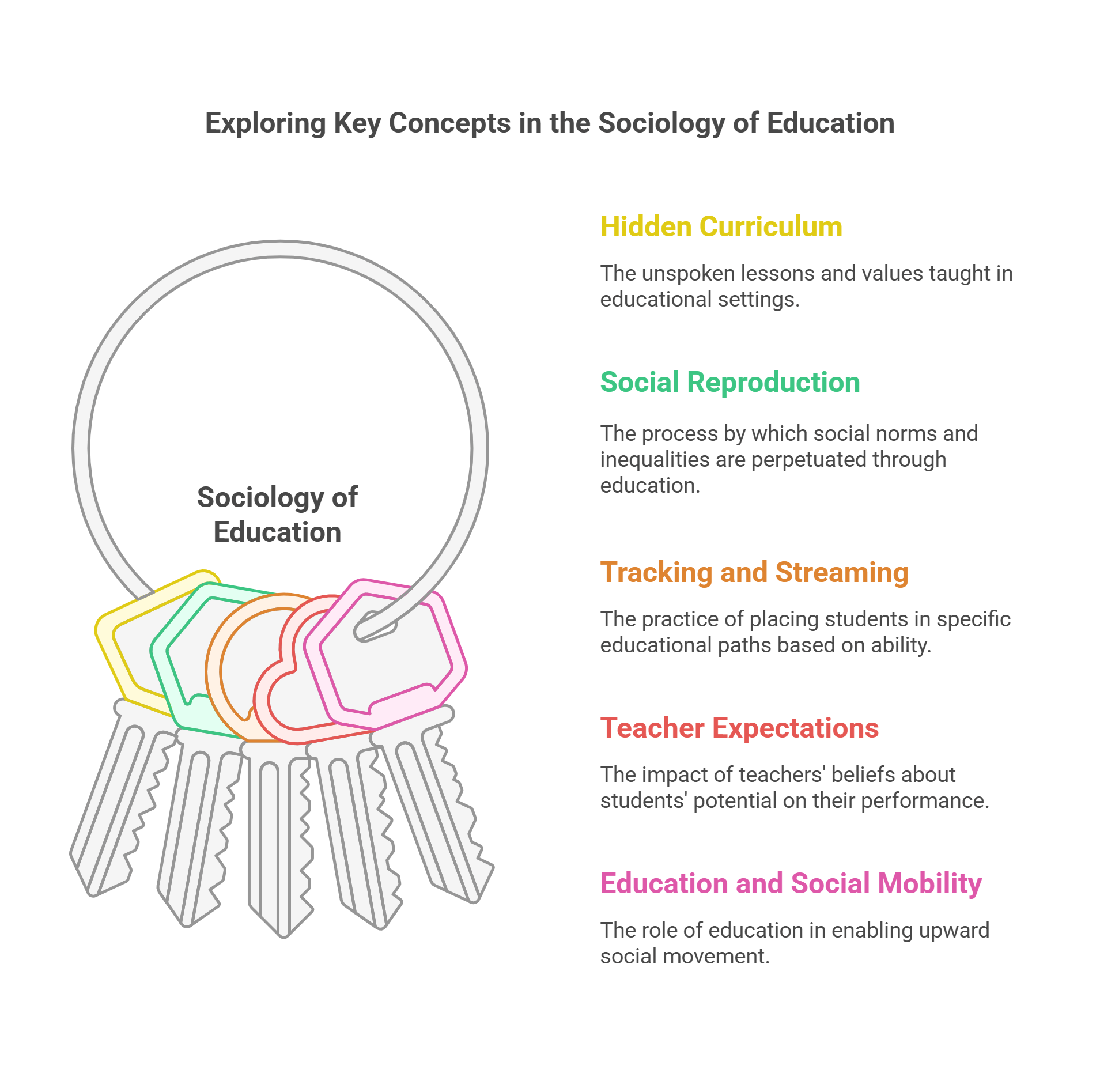
🔍 Detailed Explanations
1. Hidden Curriculum
The hidden curriculum refers to the implicit lessons, values, and norms that schools transmit to students beyond the formal curriculum. These lessons shape students’ attitudes, behavior, and perceptions of societal roles.
- Key Components:
- Reinforcement of social hierarchies (e.g., obedience to authority, punctuality).
- Promotion of cultural norms, often favoring dominant societal groups.
- Impact on Students:
- Encourages conformity and discipline.
- Can perpetuate inequalities by subtly reinforcing stereotypes and biases.
Example: Students from working-class backgrounds may be socialized into accepting subordinate roles, while affluent students are encouraged to aspire to leadership positions.
Explained Simply: The hidden curriculum is like an invisible teacher shaping how students view the world and their place in it.
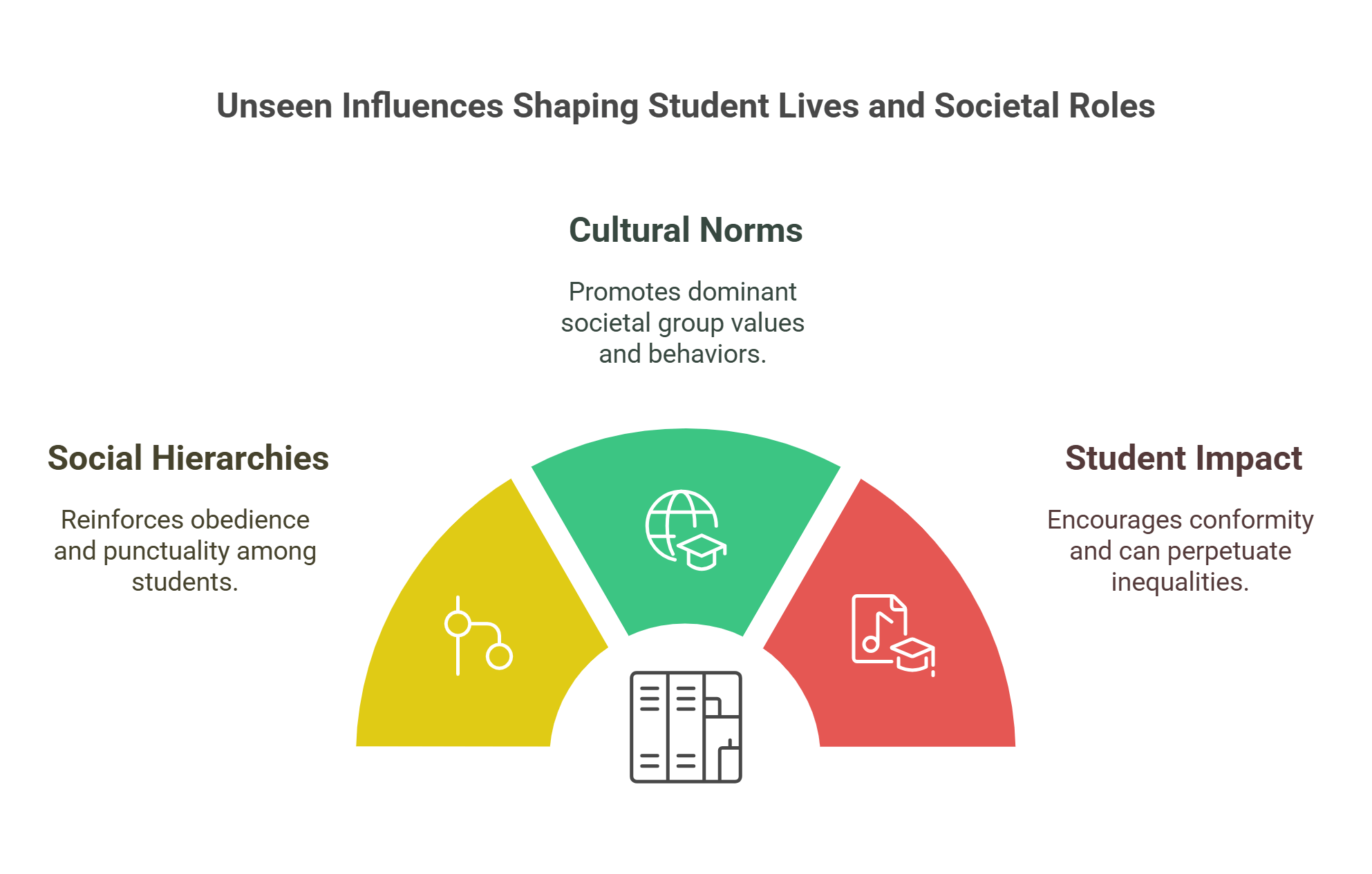
2. Social Reproduction
Social reproduction refers to the ways in which education perpetuates existing social and economic inequalities. It suggests that schools often mirror societal structures, reproducing privilege for some and disadvantage for others.
- Key Theories:
- Pierre Bourdieu’s Theory of Cultural Capital: Students from privileged backgrounds possess cultural knowledge and behaviors that align with school expectations, giving them an advantage.
- Bowles and Gintis’ Correspondence Principle: Argues that schools prepare students for roles in a capitalist economy, reproducing class structures.
Example: Wealthy families invest in private tutoring and elite schools, ensuring their children maintain economic and social advantages.
Explained Simply: Social reproduction is like a societal photocopier—replicating the same inequalities across generations.
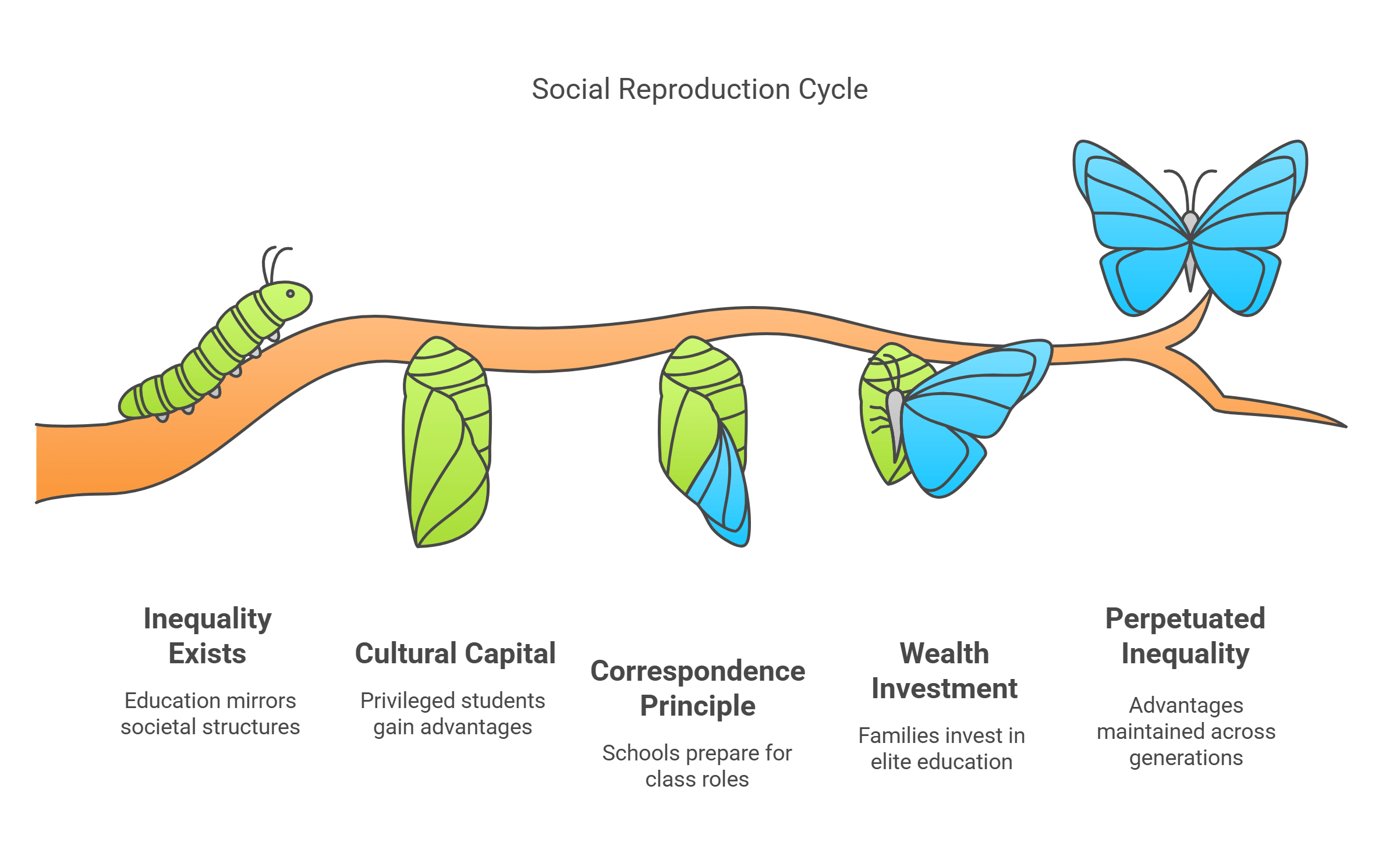
3. Tracking and Streaming
Tracking (U.S.) or streaming (U.K.) involves grouping students by perceived ability or academic performance into different classes or educational paths.
- Key Features:
- Ability-Based Classes: Students are placed in honors, regular, or remedial tracks.
- Vocational vs. Academic Tracks: Divides students into career-focused or higher-education-oriented paths.
- Criticism:
- Reinforces social and racial inequalities, as lower-income or minority students are disproportionately placed in lower tracks.
- Limits opportunities for upward mobility.
Example: Students in advanced math classes may receive better teaching resources and encouragement, while those in remedial classes face stigmatization.
Explained Simply: Tracking is like dividing a highway into fast and slow lanes, but not everyone has the chance to switch lanes.
![]()
4. Teacher Expectations
Teacher expectations significantly influence student performance, a phenomenon known as the self-fulfilling prophecy. Teachers’ beliefs about a student’s abilities can shape the opportunities and encouragement they provide.
- Key Concepts:
- Pygmalion Effect: High expectations lead to improved performance.
- Golem Effect: Low expectations result in decreased performance.
- Impact:
- Creates a feedback loop where teacher biases, conscious or unconscious, affect students’ self-esteem and outcomes.
Example: A teacher who assumes a student is academically gifted may offer more challenging assignments, fostering greater achievement.
Explained Simply: Teacher expectations are like lenses that can magnify or blur a student’s potential.
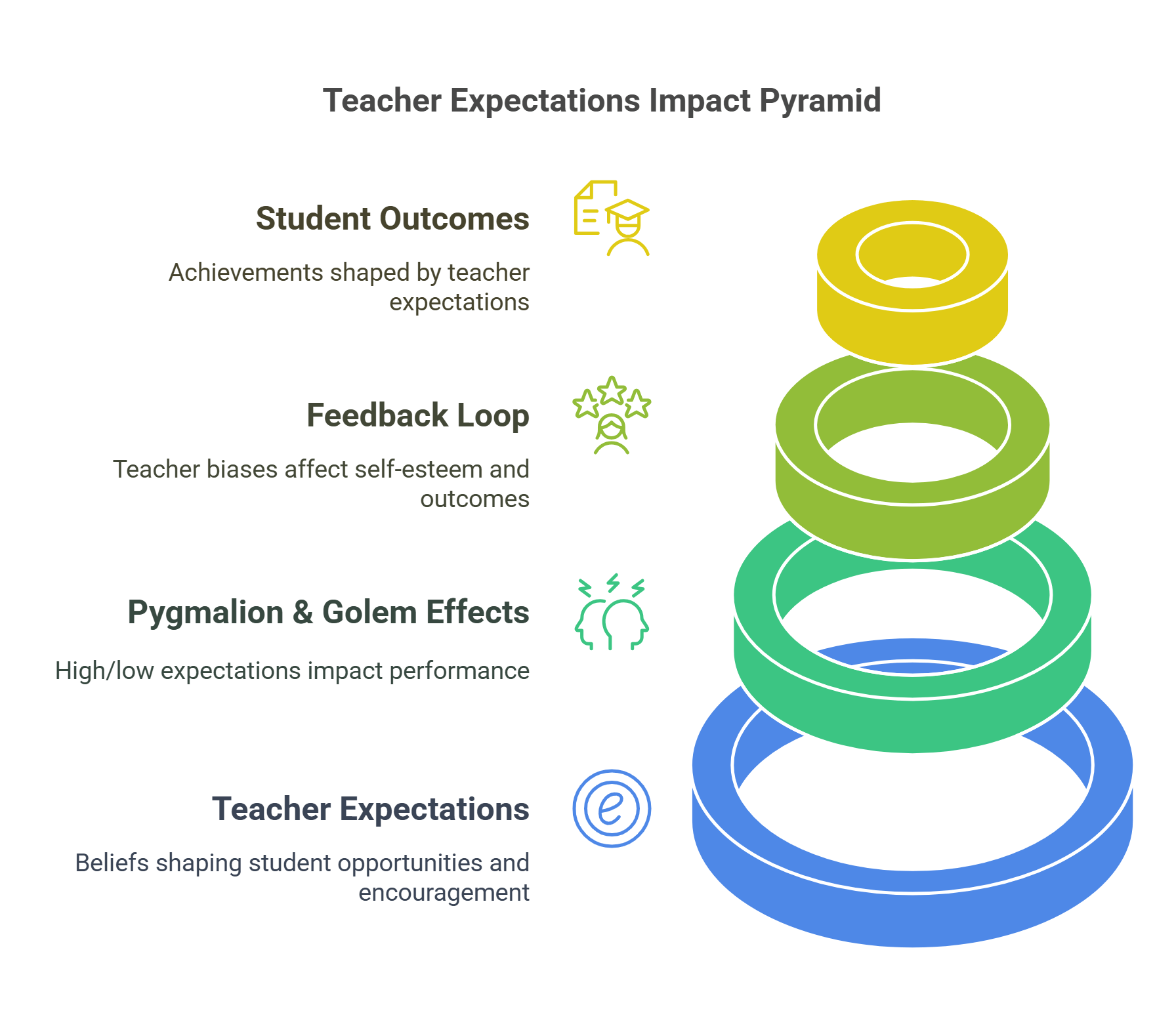
5. Education and Social Mobility
Education is often viewed as a ladder for achieving upward social mobility, enabling individuals to improve their economic and social status through qualifications and skills.
- Key Factors Influencing Mobility:
- Access: Equal access to quality education is critical.
- Meritocracy: The belief that effort and talent determine success.
- Barriers: Disparities in funding, resources, and opportunities hinder mobility for marginalized groups.
- Criticism: Educational systems often favor those with existing advantages, such as wealth or cultural capital, limiting true mobility.
Example: First-generation college students often face challenges accessing elite universities compared to their peers from privileged backgrounds.
Explained Simply: Education is like a ladder that helps people climb higher—but not everyone starts at the same rung.
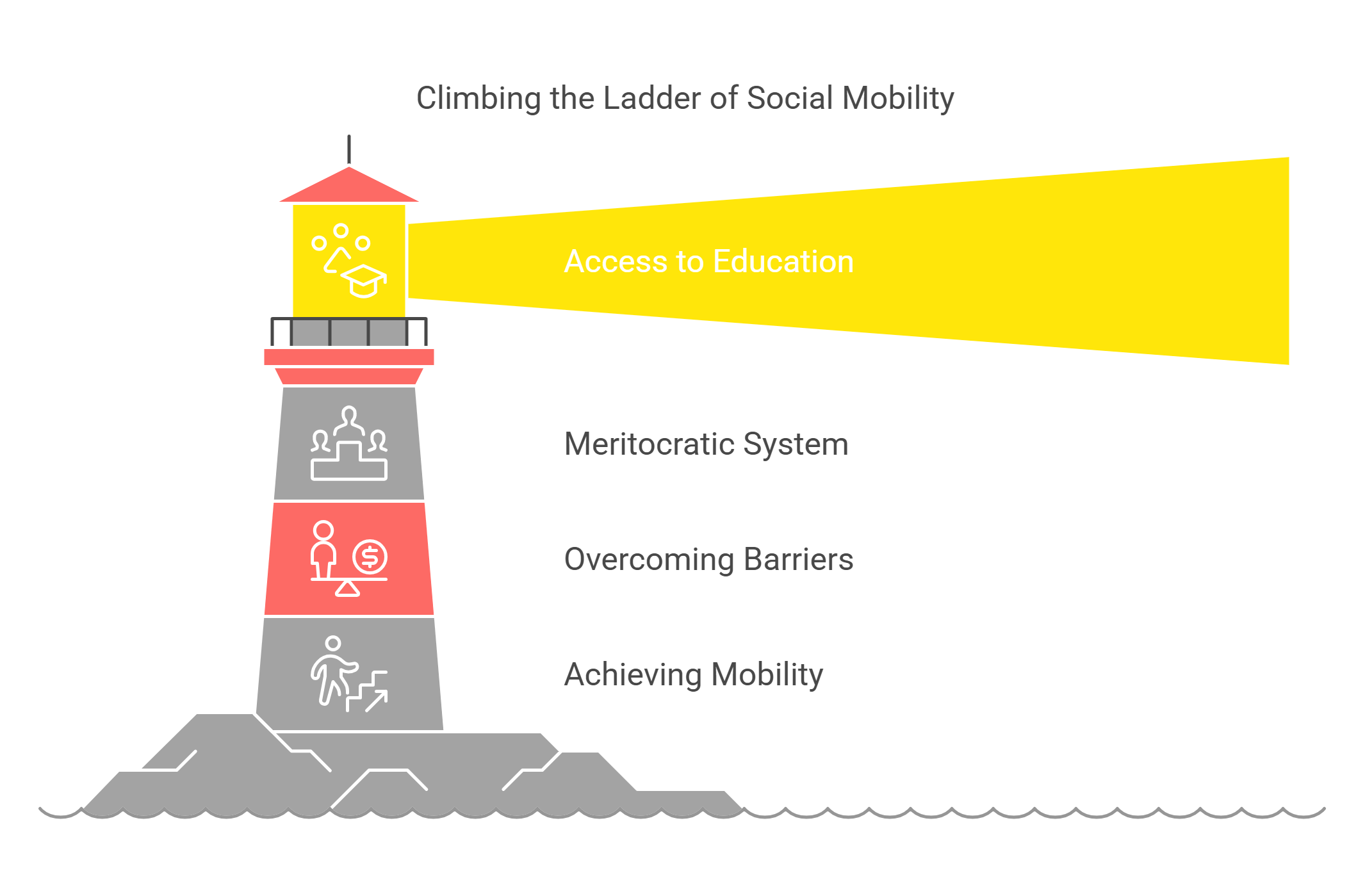
6. Digital Divide in Education
The digital divide refers to the gap between those who have access to modern information and communication technology (ICT) and those who do not. In education, this divide impacts students’ ability to access online resources, participate in digital learning, and develop technological skills.
- Key Factors Influencing the Digital Divide:
- Economic: Families in low-income brackets often lack access to computers or reliable internet.
- Geographical: Rural and underserved areas may have limited broadband infrastructure.
- Generational: Older educators or students may lack digital literacy.
- Impact on Education:
- Exacerbates existing inequalities, as students with better access to technology perform better academically.
- Limits opportunities for students to develop critical 21st-century skills like coding and online collaboration.
Example: During the COVID-19 pandemic, students from underprivileged backgrounds struggled to participate in remote learning due to lack of internet access.
Explained Simply: The digital divide in education is like building a road to success where only some students have the vehicles to travel it.
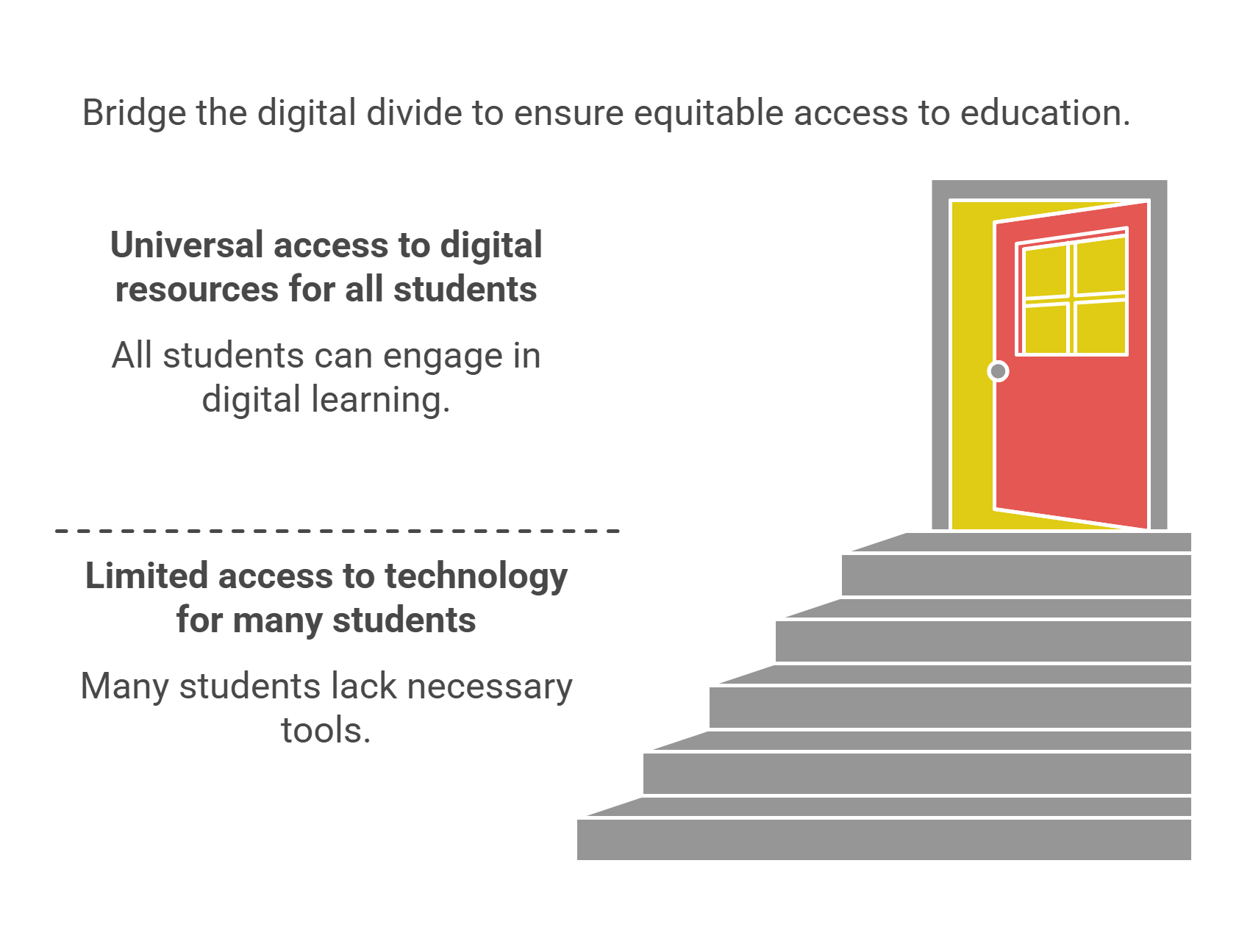
7. Standardized Testing
Standardized testing involves using uniform assessments to evaluate students’ academic performance, often to compare schools, districts, or nations. While widely used, it remains a topic of debate due to its implications for equity and learning outcomes.
- Key Purposes:
- Measures student achievement and teacher effectiveness.
- Helps identify gaps in educational attainment across demographics.
- Criticisms:
- Overemphasis on testing can narrow curricula, focusing on testable subjects at the expense of creativity and critical thinking.
- Tests may disadvantage students from non-dominant cultural or linguistic backgrounds.
Example: The SAT and ACT are standardized tests widely used for college admissions in the U.S., but their fairness and predictive validity are often questioned.
Explained Simply: Standardized testing is like using a single yardstick to measure diverse talents and abilities, which may not be fair for everyone.

8. Bilingual Education
Bilingual education refers to teaching academic content in two languages, enabling students to maintain their native language while acquiring proficiency in a second language. This approach supports linguistic diversity and cognitive development.
- Key Models:
- Transitional Bilingual Education: Gradually shifts students from their native language to the dominant language of instruction.
- Dual-Language Immersion: Teaches all students in two languages, promoting bilingualism for both native and non-native speakers.
- Benefits:
- Enhances cognitive flexibility and problem-solving skills.
- Preserves cultural identity and heritage among minority language speakers.
- Challenges:
- Requires well-trained bilingual teachers and resources.
- Faces resistance in areas prioritizing monolingual education.
Example: Dual-language programs in U.S. schools teach students in English and Spanish to promote bilingual proficiency.
Explained Simply: Bilingual education is like planting seeds in two languages, helping students grow intellectually and culturally.
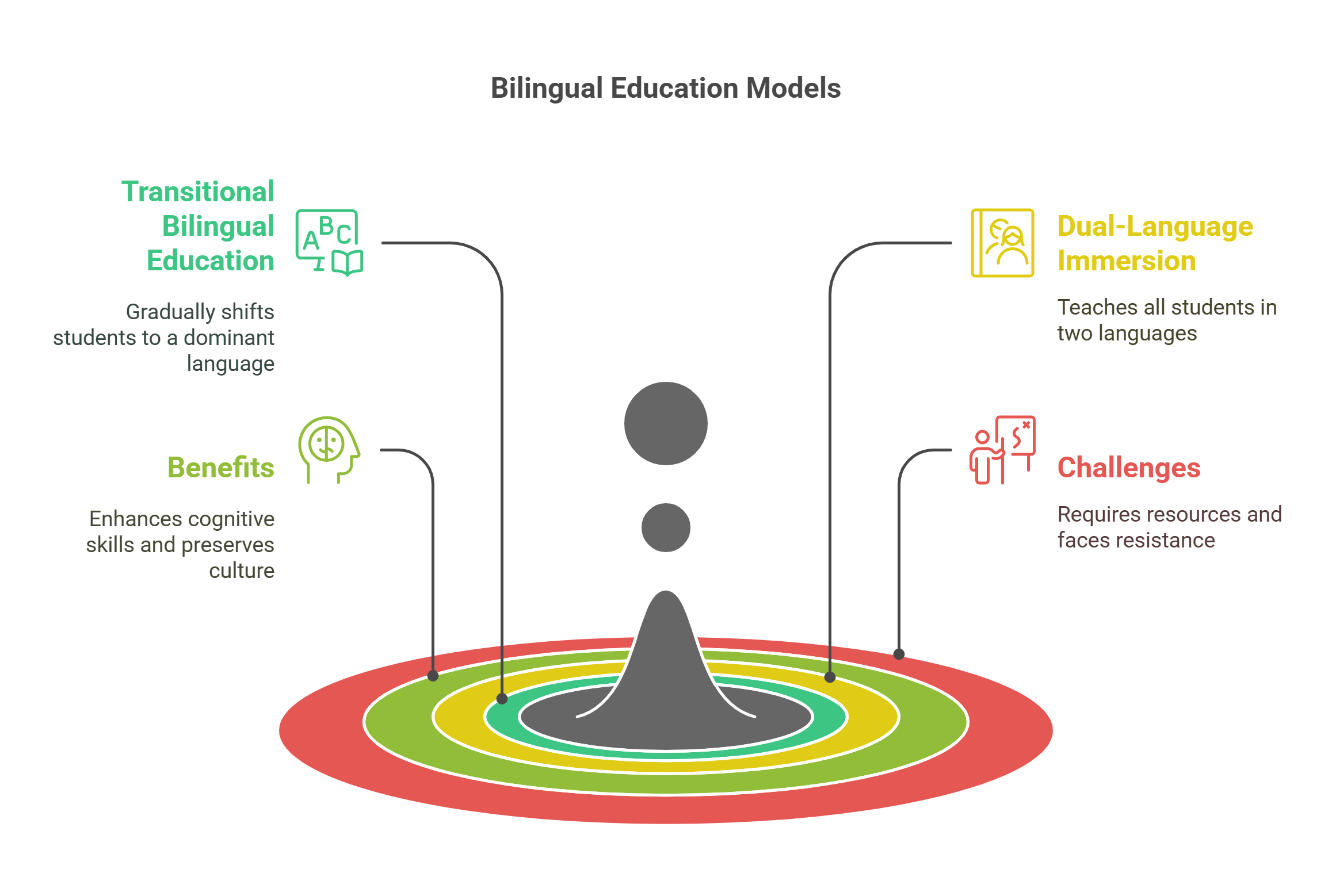
9. Education and Gender
The relationship between education and gender explores how educational systems shape and reflect gender norms, impacting opportunities, access, and outcomes for students.
- Key Issues:
- Gender Gaps in Enrollment: In some regions, girls face barriers to education due to cultural, economic, or safety concerns.
- Stereotyping in Curriculum: Gendered expectations in textbooks and teaching materials can reinforce traditional roles.
- Career Choices: Gender biases influence subject preferences and career aspirations (e.g., fewer women in STEM fields).
- Advancements: Efforts to promote gender equity through scholarships, mentorship programs, and policy changes.
Example: Organizations like Malala Fund advocate for girls’ education worldwide, addressing barriers such as child marriage and lack of resources.
Explained Simply: Education and gender examine how schools can either challenge or reinforce societal norms about what boys and girls can achieve.

10. Informal Education
Informal education refers to learning that occurs outside formal institutions like schools. It involves self-directed, experiential, and community-based learning through everyday interactions, media, and experiences.
- Key Characteristics:
- Flexible and Unstructured: Learning is not bound by rigid curricula or assessments.
- Social Context: Takes place in families, peer groups, workplaces, or online communities.
- Impact on Society:
- Fosters lifelong learning and adaptability.
- Plays a critical role in transmitting cultural values, norms, and practical skills.
Examples: A child learning cooking techniques from a parent; adults improving digital literacy through YouTube tutorials.
Explained Simply: Informal education is like learning from life itself, outside the walls of a classroom.
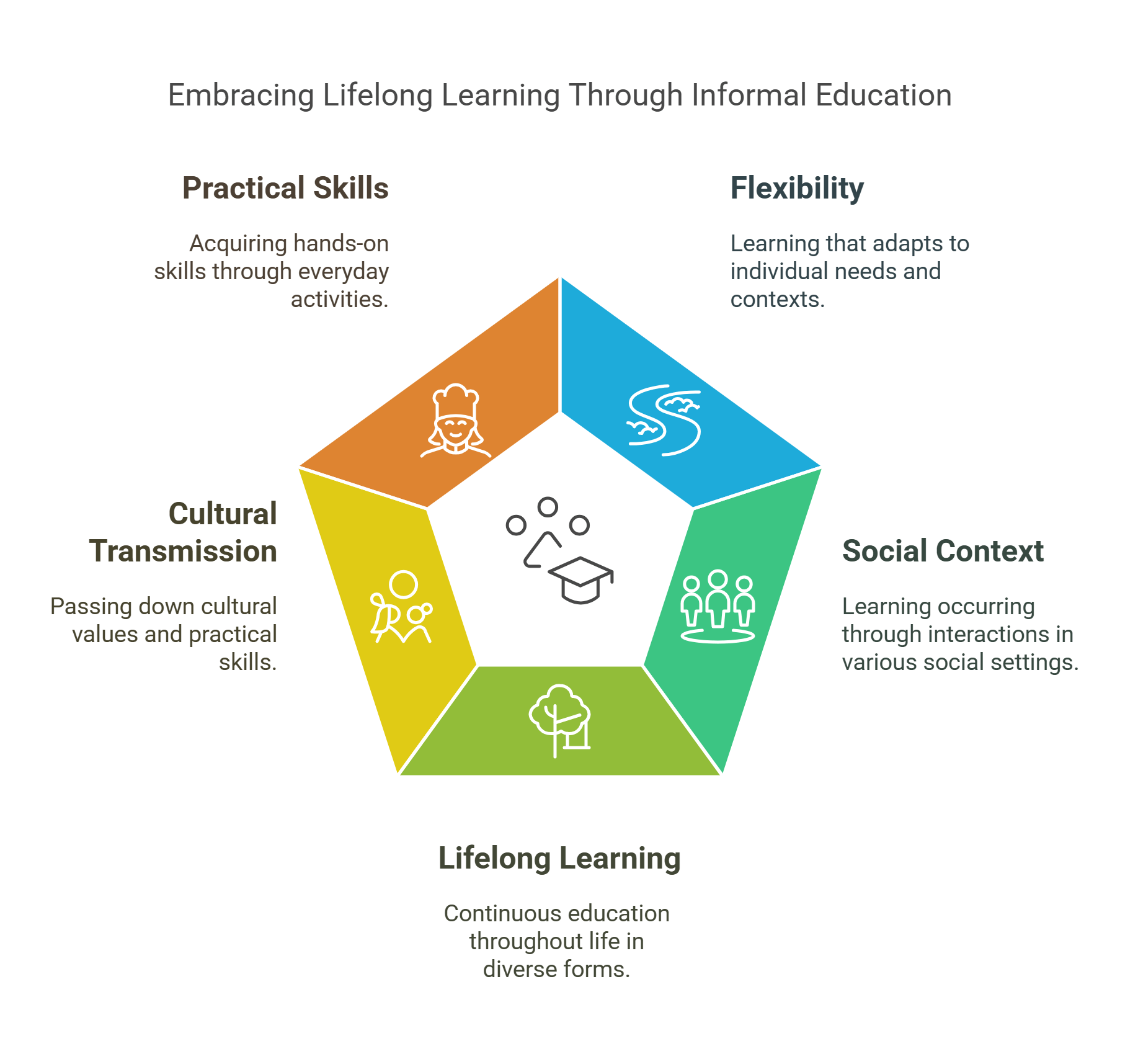
✨ Conclusion
The sociology of education explores how learning systems reflect and shape societal structures, values, and inequalities. By understanding concepts like the hidden curriculum, the digital divide, and informal education, readers can critically analyze RC passages and appreciate the transformative potential of education in creating equitable societies.










